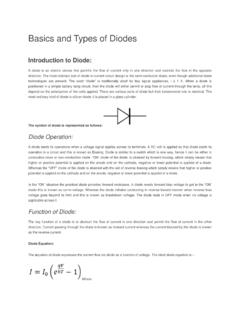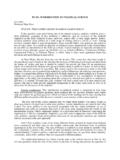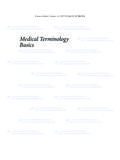Transcription of Development Agreements: Basics and Beyond - wcglaw.net
1 The University of Texas School of Law Continuing Legal Education 512-475-6700 Presented: 2012 Land Use Conference March 22-23, 2012 Austin, TX Development Agreements: Basics and Beyond Reid C. Wilson with contributions by James L. Dougherty, Jr. Author contact information: Reid C. Wilson Wilson, Cribbs & Goren, Houston, TX 713-222-9000 James L. Dougherty, Jr. Attorney at Law Houston, TX 713-880-8808 TABLE OF CONTENTS I. introduction ..1 II. WHAT ARE Development AGREEMENTS? ..1 III. STATE-LAW AUTHORITY FOR Development AGREEMENTS ..2 A. Common Law Agreements & General Statutes.
2 2 B. Economic Development or 380 Agreements (TEX. LOC. GOV T CODE Chapter380) ..3 C. Development Participation Agreements (TEX. LOC. GOV T CODE ) ..4 D. ETJ Development Agreements (TEX. LOC. GOV T CODE ) ..5 E. Industrial District Agreements (TEX. LOC. GOV T CODE , ) ..6 F. Planned Unit Development District agreement (TEX. LOC. GOV T CODE ) ..7 G. Neighborhood Empowerment Zone agreement (TEX. LOC. GOV T CODE CHAPTER 378) .8 H. Utility System Agreements (TEX. LOC. GOV T CODE CHAPTER552) ..8 I. Impact Fee Agreements (TEX. LOC. GOV T CODE CHAPTER 395) ..8 J. Economic Development Corporations, Public Improvement Districts, Etc.
3 (TEX. LOC. GOV T CODE Chapters 372, 501, ET SEQ.) ..8 K. Tax Increment/Tax Abatement Agreements (TEX. TAX CODE CHAPTERS 311 & 312) ..9 L. Public-Private Partnership agreement (Tex. Gov t Code Chapters 2267 and 2268) ..9 IV. VALIDITY AND ENFORCABILITY ..10 A. Private vs. Public B. Constitutional Restrictions ..10 C. Governmental Immunity ..13 V. NEGOTIATION OF Development AGREEMENTS ..16 A. Basic Approach ..16 B. Money and Land ..17 VI. DRAFTING POINTS ..18 A. Forms and Checklist ..18 B. Risk Issues; Drafting Approaches ..19 Exhibit A General Checklist For Development Agreements ..20 Exhibit B Risk Issue Chart ..24 Exhibit C Additional Resources, Forms & Materials.
4 28 1 Development AGREEMENTS: Basics AND Beyond I. introduction Development Agreements are in increasingly frequent use in Texas. Since Development Agreements meld private real property law (based upon contract law principles) with local government law (based upon public law principles), they present unique issues a lawyer might not otherwise encounter. This paper addresses important issues in structuring, negotiating, and drafting Development Agreements. II. WHAT ARE Development AGREEMENTS? In this paper, a Development agreement is any contractual agreement between a municipality (city, town or village)1 and the owner of real property relating to Development or redevelopment of that property.
5 The scope could cover land Development (planning, platting, zoning, engineering, and infrastructure), vertical improvements (buildings and other structures for human occupancy), or both. Vvertical improvements could include not only new construction but also renovation, remodeling or adaptive reuse of existing improvements. Benefits often sought by land owners: Money (including reimbursements for Development costs) Land (or removal of encumbrances like public easements or rights of way) Public infrastructure (or related reimbursement), , water, sewer, drainage, streets, etc. Regulatory relief (or stability) Deferral of annexation (where applicable) Benefits often sought by municipalities: Increased tax base property and sales tax Economic Development : additional jobs and/or diversification of job base Community amenities: entertainment, shopping, work force housing, etc.
6 Public infrastructure: installed and paid for by developer (sometimes reimbursed by the city) Higher-quality Development A key purpose of almost any Development agreement is to encourage and support the type of Development described in the agreement . A core principle is the concept that but for the agreement , the Development would either not occur at all or would occur with a different form, quality or timing. For example, the City of Austin has entered "Planned Development Area Agreements" (or "PDA Agreements") to recruit major employers, especially in "high-tech" 1 Similar contracts can be made with other local government units, , a county or any of the proliferating types of special districts such as municipal utility districts, tax increment reinvestment zones, municipal management districts, etc.
7 The governing laws will vary depending upon the type of unit. 2 industries. Typically, such agreements would involve large tracts of land, designate industrial districts and provide.. for the extension of city water and wastewater services to the property (generally financed with substantial funds paid by the city for the cost of such extensions). These agreements have also placed a restriction on the ability of the city to annex the property. In exchange for obtaining city services and avoiding city ad valorem taxes for a period of years, the city has been able to include provisions in the PDA Agreements that limit the uses of the property to specific "clean" industrial or research and Development uses generally consistent with a general land use plan.
8 These provisions impose "performance standards" related to noise, smoke, emissions, the handling and use of hazardous materials, and other city zoning ordinances otherwise applicable only to properties within the city limits, such as height, setback, parking, building coverage, landscaping, sign, and lighting limitations. The provisions in the PDA Agreements also address issues related to providing access, traffic regulation, subdivision, drainage, and water quality facilities. R. Alan Haywood & David Hartman, Legal Basics for Development Agreements, 32 Texas Tech Law Review 955, 959 (2001)( Haywood & Hartman ).
9 Traditional land-use regulations---platting, zoning and building codes---restrict and control Development . Development Agreements can permit local governments to support, entice and encourage Development , and they sometimes attempt to limit traditional land-use regulations. This is a new world for many local governments, profoundly different from the traditional model of local land-use regulation. One academic commentator has observed that a contract-based model fundamentally alters the foundational principles of land use regulation. Daniel P. Selmi, The Contract Transformation in Land Use Regulation, 63 STAN.
10 LAW REV. 591, 595 (2011)( Selmi ). As more fully discussed in this paper, legal doctrines developed over the years for the traditional model of land-use regulation are difficult to reconcile with contract-based regulation---and this creates an atmosphere of uncertainly about the validity and enforceability of Development Agreements. That uncertainty is anathema to the private sector, which often seeks to use Development Agreements to reduce risk and to provide material economic benefits critical to a planned project. III. STATE-LAW AUTHORITY FOR Development AGREEMENTS A. Common Law Agreements & General Statutes In general, cities have the power to enter into contracts as part of their authority to operate and perform municipal functions.









